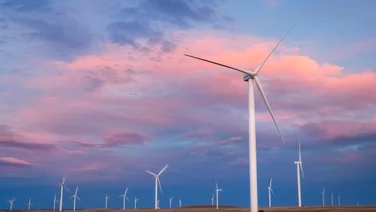- Cobalt is a vital component for making electric car batteries
- Cobalt mining is linked to human rights abuses in the Democratic Republic of Congo
- Iron has already replaced cobalt in around 50% of EV batteries in China
Cobalt is a vital component in electric vehicle (EV) batteries, but mining for this metal has become extremely controversial. And as demand for EVs is expected to grow again, so will the demand for cobalt.
The controversies surrounding cobalt are a key reason why many scientists and companies are looking for alternatives to use in batteries. But are these necessarily more ethical and sustainable?
To get a better understanding of the issue, we’ll take you through what cobalt is, how it’s used and mined, and what the controversies surrounding it are.

What is cobalt and why do we need it?
Cobalt is a hard, brittle metal that is found in very small quantities around the world, both on land and in seabeds. It has a very high melting point – 1,495 Celsius (°C) – and it doesn’t corrode easily.
These properties have allowed cobalt to become a vital component for making rechargeable lithium-ion batteries – the kind used in EVs and electronic devices, such as mobile phones and computers.
When combined with other metals, cobalt is perfect for lightweight, energy-dense batteries that have a low risk of overheating, and are very durable. This is the same reason why cobalt is also used for making engines or turbines, which have metal parts that need to be particularly heat resistant.
Where is cobalt mined?
Cobalt is mined in several countries, with the top producers including the Democratic Republic of Congo (DRC), Russia, Australia, and the Philippines.
However, the DRC is by far the largest cobalt producer, responsible for around 70% of global production.
It’s also worth noting that most mines aren’t dedicated to extracting cobalt alone. In fact, 98% of cobalt is produced as a byproduct of copper or nickel mining, according to the Cobalt Institute.
Why is cobalt mining so controversial?
Cobalt mining is controversial because it’s been linked to human rights abuses – especially in the DRC – and environmental degradation.
Most cases of exploitation and unsafe working practices occur in ‘artisanal mines’, where workers hand dig for cobalt. These account for around 20% of the cobalt mines in the DRC.
Several human rights organisations, such as Amnesty International, have reported that cobalt miners in artisanal mines are exposed to toxic chemicals, work for long hours with little pay, and that many of them are children as young as seven.
It’s also estimated that cobalt mining produces around 1.6 million tonnes of carbon dioxide (CO2) a year, according to a 2021 Roskill report. It takes a lot of energy to mine and extract cobalt from the ground, and machinery used for this is usually powered by gas and oil.

What are the best alternatives to cobalt?
The viable alternatives to cobalt for use in batteries are nickel, manganese, and iron.
But these alternatives aren’t used alone. As is the case with cobalt, they’re combined in varying quantities with other metals to produce stable, heat- and corrosion-resistant batteries.
We’ll explore more about each of these alternatives in the sections below:
Nickel
Nickel is a much more common metal than cobalt, with scientists estimating that there are around 350 million tonnes of nickel on Earth. By contrast, there’s only around 7.6 million tonnes of cobalt.
This metal is already being mined in several countries, including Australia, Indonesia, South Africa, Russia and Canada. In fact, 38% of cobalt production is actually a byproduct of nickel mining. It’s used in many consumer and industrial products as a plating material.
The good news is that researchers at the University of California have come up with a nickel-based battery component that has high stability – meaning it doesn’t degrade at high temperatures. They did this by combining the nickel with other metals, such as titanium and manganese – another proposed cobalt alternative.
That being said, nickel mining is subject to the same controversies as cobalt mining. Namely, environmental pollution, high carbon emissions, and human exploitation.
Manganese
Manganese is another cobalt alternative, and it’s already mined in countries such as South Africa, Australia, and China.
Its most common use is in the steel industry because it provides greater strength and resistance when mixed with other metals. It’s also often used alongside cobalt and nickel in batteries, but isn’t the primary component.
However, in 2022, some car manufacturers, such as Tesla and Volkswagen, stated they could potentially replace cobalt with manganese in EV batteries, after new research suggested it could be a good alternative option.
Iron
Iron is another increasingly popular alternative to cobalt, and is used in batteries in the form of lithium iron phosphate (LFP). It’s mined in around 50 countries, but the biggest exporters are Australia and Brazil.
LFP batteries are cheaper to produce than cobalt- or nickel-based ones, and also last longer.
They’re already used in China, and accounted for around half of the battery capacity of EVs sold there in 2022, according to research from Adamas Intelligence.
Following this trend, major car producers in the West, such as Tesla, Ford, and Volkswagen announced in early 2023 that they plan to start using iron-based batteries in their cars.
What is the future of cobalt mining?
Cobalt mining will probably become more common in the near future, with supplies from the DRC already forecast to be 24% higher in 2023 compared to 2022. But this increased level of mining might not last forever.
EVs might not use cobalt-based batteries in the long term future, even if demand for electric cars continues to increase. That’s because cheaper and less controversial alternatives, such as iron-based batteries, are already being used successfully.
But limiting the negative environmental impact of mining is challenging, even if machinery is being fuelled by green energy. It’s difficult to control where dust and metal particles go during drilling, and mining by its nature destroys habitats.
Summary
- Cobalt is a vital component of EV batteries, but mining it challenges the sustainability of electric cars
- Even if the cobalt mining industry improves working conditions for miners, one problem still remains: mining of all types of metals, including cobalt alternatives is still an unsustainable, polluting activity
- A better long-term solution would be to create a sustainable battery industry
- Iron is another increasingly popular alternative to cobalt, and is used in batteries in the form of lithium iron phosphate
- Nickel is a much more common metal than cobalt, with scientists estimating that there are around 350 million tonnes of nickel on Earth







